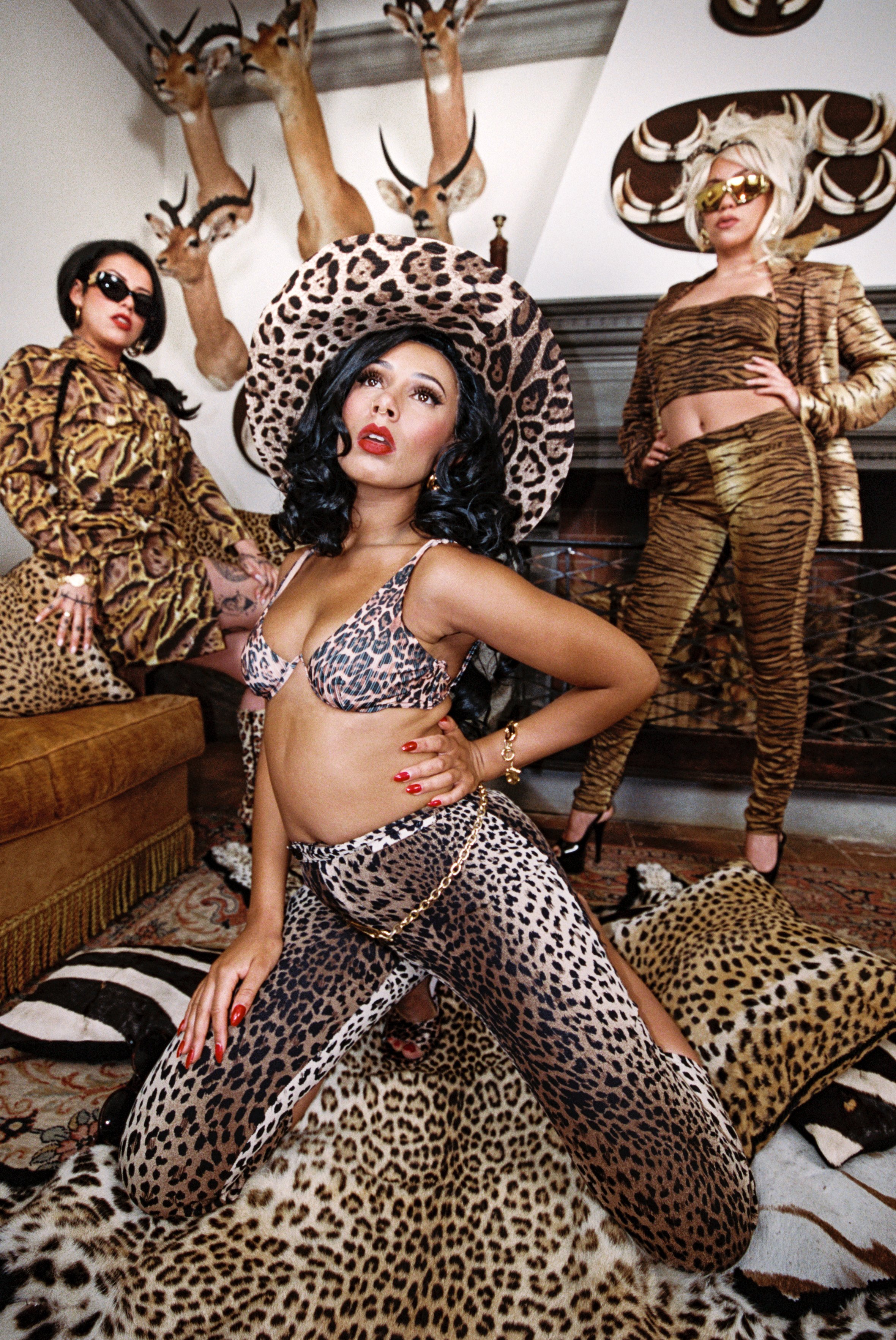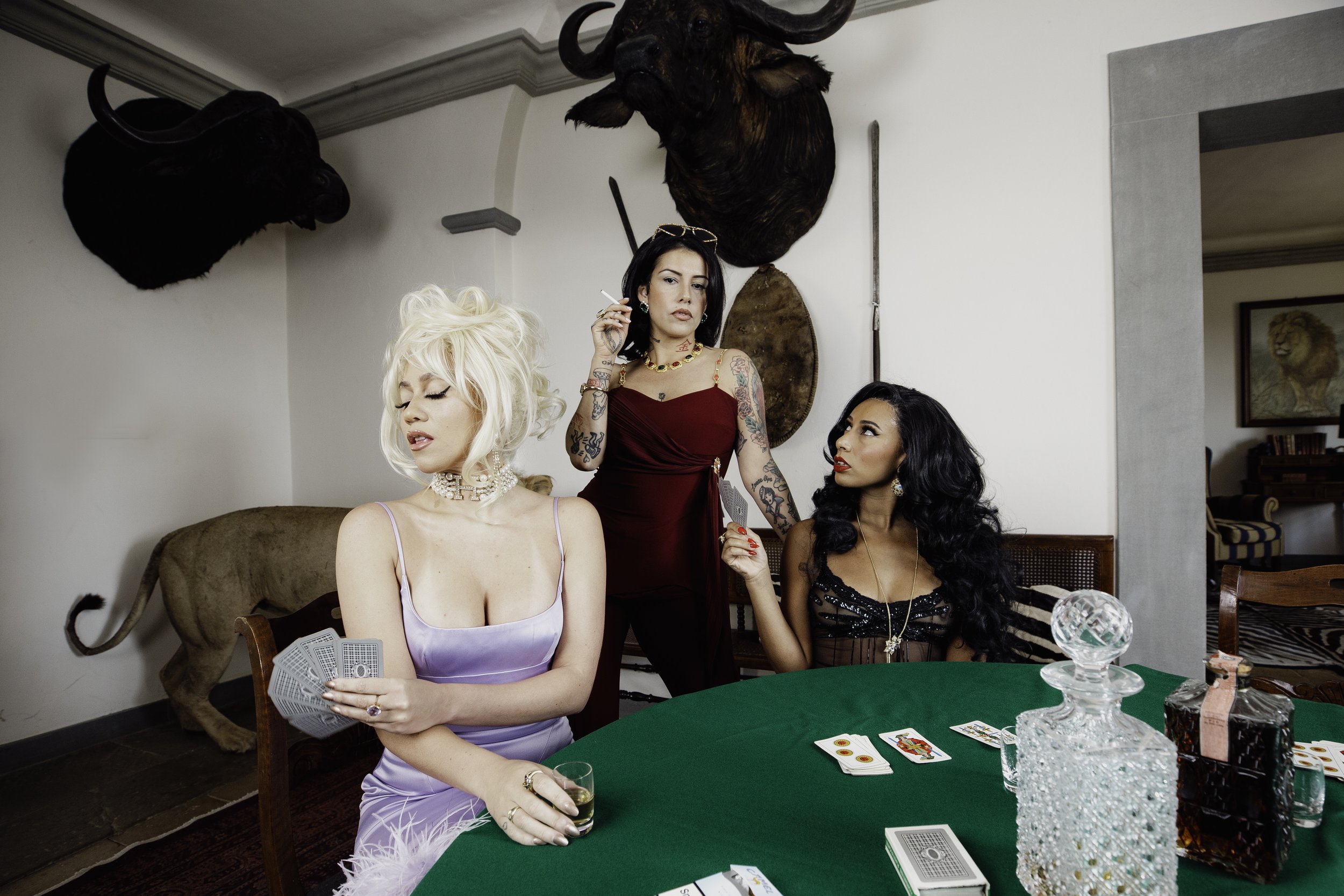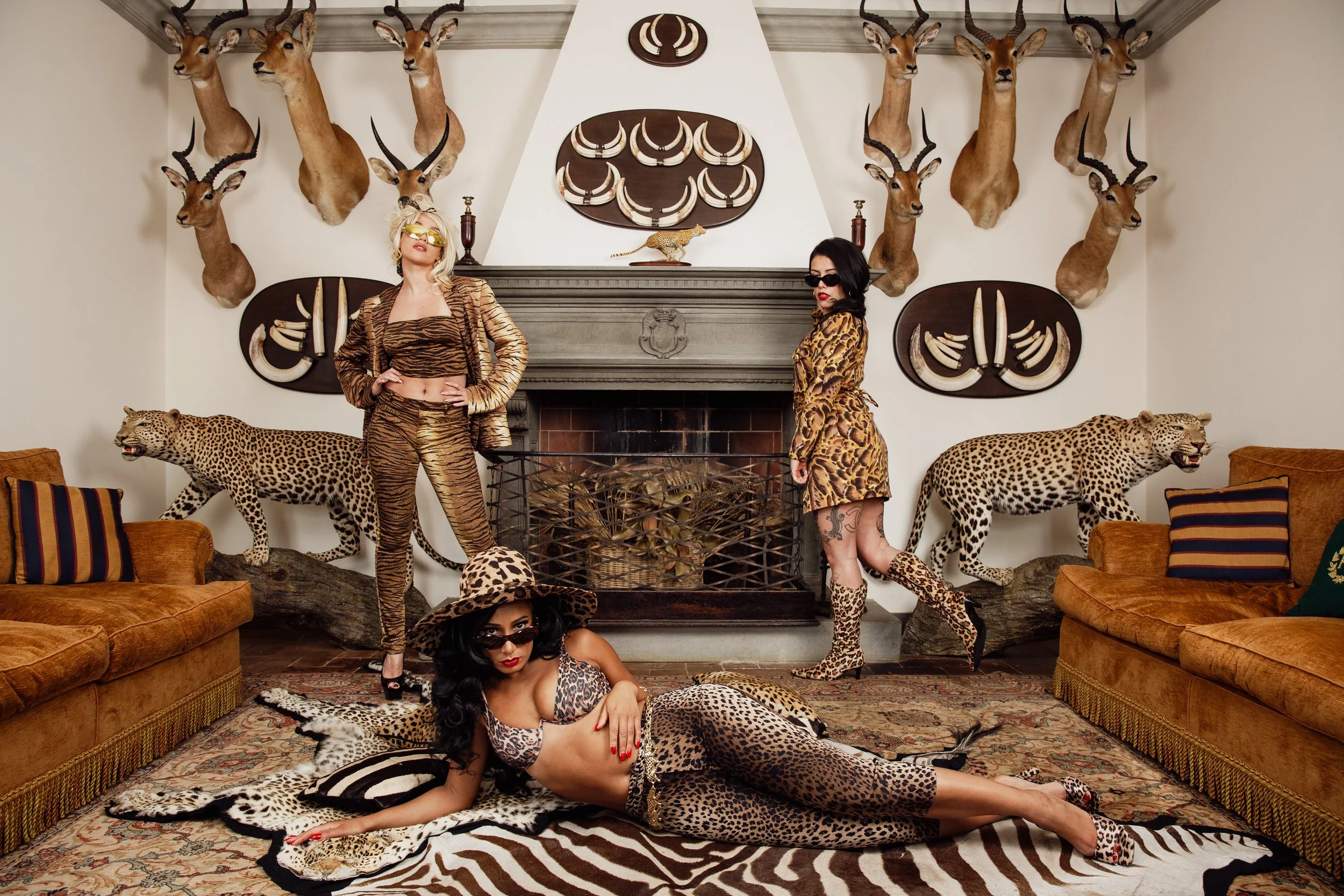Hackney’s Finest: Eliza Rose, Jeanie Crystal, and Rhiannon Barry are the Creative Team Prioritising Working Class Visibility
Make it stand out
As the title of her Summer ‘22 house hit with Interplanetary Criminal suggests, Eliza Rose is indeed the Baddest Of Them All. No stranger to the East London club scene, the Hackney-based DJ, singer and music producer climbed her way to the top of the charts with certified-platinum prowess following festival traction and TikTok virality. Today, she’s the love of the masses.
Responsible for directing several of Rose’s entrancing, spirited visuals is Jeanie Crystal - fellow DJ, visual artist and co-founder of FabooTV. Look no further than Rhiannon Barry, stylist, archivist and former co-owner of Wavey Garms, as the brains behind some of Rose’s signature fashion moments. Together with the help of her Hackney girlfriends, Rose and Co have crafted and cultivated a vibrant cultural haven of their own, pearly gates and all.
Celebrating the release of new single Body Moving featuring Calvin Harris, the trio sat down for a candid conversation reflecting upon their withstanding history as collaborative partners, profiling working class communities and probing complex identities along the way.
B.O.T.A. possesses all the markings of a classic Eliza Rose music video. Hackney nightlife in vivid technicolour, ‘90s and ‘00s hedonism in the air. Fast forward to Take You There, an intergalactic elevation of this aesthetic. Has there always been a strategy in place for the building of Eliza’s own cinematic universe, or is output a product of environment?
Jeanie Crystal: I truly believe good culture comes from an organic exchange of energy within a community. Back in the day that used to happen a lot more. There was the space for people to be able to live in London, live in a squat, go to university, create these little pockets of community and culture. There’s no way that my work at this point in our career would ever be separated from that because it just informs it too much.
We were doing this anyway before Eliza’s success. This is just a continuation but with more funding essentially. We met through a mutual friend called Alice Skinner, who’s an amazing feminist illustrator, outside the women-only space in Glastonbury. We realised we had a love of soul music, then we started playing vinyl 7-inches across Hackney.
Eliza Rose: I’d say there’s been a connection from the very second. It’s been really cute actually.
Crystal: It’s really easy to direct Eliza because I love her, we’re so close there’s no hierarchy. There isn’t anything to navigate. I'm always interested in worldbuilding and characters that you can dive and get lost into.
From drag queens and voguers to runway dancefloors, a plethora of queer connections appear across your work both on-screen and onstage. I particularly enjoyed revisiting your MOBO Awards 2022 performance. What does your continued showcasing of such talent signify?
Rose: Thank you. The MOBO’s, Jeanie really encouraged me to do it. We had a Channel One sound system, but also a lot of queer performers. It’s showing that these different contrasting things can work naturally in the right kind of circumstances, if people are accepting.
It’s incredibly important for me to show visibility but it’s done in a way that is just about celebrating friends and friendships and showcasing incredible people.
Describe the process behind styling Eliza Rose. How would you define her image as an artist? Are there any favourite looks you’ve worked on together that spring to mind?
Rhiannon Isabel: The last year has been so much fun styling Eliza. I was working on a lot of commercial campaign work before, so this really is a dream. We have done some pretty iconic looks, my favourites have to be the full archive of Vivienne Westwood for BRITs 2023 and Carnival Queen for Reading Festival, the same weekend as Notting Hill Carnival.
I collect vintage designer clothes as a side hobby, and Eliza also has her own archive of vintage Moschino that is rapidly outgrowing mine. We try to do a mix of both vintage and upcoming local designers, or sometimes just full-blown costumes. Eliza feels more comfortable on stage when she has her wigs and fabulous loud outfits. I think it helps her get into character.
Let’s talk about the duality of masculinity and femininity depicted in the music video for Take You There. A tongue-in-cheek portrayal, Eliza goes joyriding in both male and female drag, enunciating the song’s infectious hook with added effect at each turn. Where did the concept for this originate?
Rose: Every time I write a song, because I’m a very visual person, I have a music video that goes along in my head with it. Sometimes it's so strong I really want to portray that in the video as well. It has this deep gritty voice of “Yeah, I could take you there” and then it has that cutesy girly element.
Growing up and being mixed-race, you often feel like you’re in these two contrasting senses of identity. Always you’re existing with this sense of duality, these dual personalities... there’s so many of them. They can all coexist at the same time and it’s impossible to be any one thing.
Crystal: That, in a sense, is so much a part of all our work. You can create who you want to be, and you can access so many different parts of yourself. Body Moving is very glam, it’s quite far away from Take You There. It's giving you a sense of freedom in your expression and how you want to create yourself, like it’s limitless.
Rose: Limitless is a really good word. I feel like we’re inspired by limitless nature, all three of us have a real belief that we can do anything. There’s that sense of limitlessness in the videos, the Eliza world, the songs... they’re all in that limitless loop.
What were some of the key visual style inspirations behind the music video for Body Moving?
Rose: This is definitely Jeanie’s baby so I’m going to let her take the reins with explaining this one.
Crystal: I’ve got a lot of heroes and a lot of icons I'm obsessed with. The ones that jumped into my head when I heard Eliza’s vocal and Calvin’s production were Marlene Dietrich, Bob Fosse, Josephine Baker. Weimar cabaret. Eliza’s a very glamorous person and she’s quite flirty and funny, another was Marilyn Monroe. Calvin’s a suave character as well, so it was quite easy for me to build a little narrative around all those inspirations.
One of my favourite videos of all time is David Bowie’s Heroes, the ending of Body Moving was a bit of a homage to him there. I love Sweet Charity, also Metropolis was something that I’d rewatched recently. I was really wanting to embody a goddess archetype with Eliza, and I hope that I’d managed to do that in the end.
With a mix of demographic groups on full display, the visuals for Better Love pay tribute to your Jamaican heritage and Cockney working class culture. Namely the Pearly Kings and Queens, many of whom star in the video. How did this come to fruition?
Rose: Me and Rhiannon had spoken about doing something with the Pearly Kings and Queens for a while. It’s glamorous but it’s very working class, there’s a camp element to it. The lyric “I was just another pearl on a string”... it just kind of made sense.
I was going through my Instagram where I had posted a picture of the Pearly Queen of Hackney, who actually ended up being in the video. I used to have a picture of her up on my wall, in my bedroom, for years. As we said, this limitless loop that keeps coming back around ended up happening which was really amazing.
Isabel: A few years ago, I was outside my flat in Deptford where a horse and carriage passed, with Jamaican flags and green, yellow and black feathers on their heads. They were carrying a coffin behind, followed by a van which had the biggest sound system strapped to the back playing reggae. It was at that moment I had the idea to do a Pearly Kings and Queens shoot, but with a Jamaican twist.
I spoke to my good mate Hak Baker and asked if he would like to be down. I also shared the idea with Eliza and she literally screamed with excitement. We wanted a shot of Hak and Eliza turning up to the pub on horse and carriage, but didn't have enough budget. I grew up next to a Travellers site in Abbey Wood, the day before the shoot, I sat customising pearls onto suits whilst ringing my old pals to see if I could pull any favours. It turned out to be last minute and we had to drop the horse scene.
The next day in Hackney, I shit you not, a mixed-race man on a horse and carriage goes past us while shooting. Jeanie called him over, we offered him some cash which was way cheaper than what we quoted, and he was thrilled to be in the video. Blimmin’ mental!
What is the importance of making art that speaks to working class people, particularly working class women?
Crystal: I think the visibility of me, Rhiannon and Eliza working in quite commercial spaces, that actually in some instances pays well for your creative output, is really important for working class people to see. In London most people I've known that have done really well behind the scenes, whether that be directing, DOPing, editing, creative directing, have come from middle class or upper class families.
It’s like when you have to worry about your rent. It takes time away from your creative process and practice, and you need that to get better. Time is really precious. Also, headspace. To be in a state of worry isn’t the best place to come from to start making art. I think it’s important to have that visibility because it feels like it’s possible.
Words: Douglas Jardim | Photography: Stefania Tasca | Makeup: India Rawlings | Hair: Solomon Paramour | Stylist: Rhiannon Barry | Archive: ninety fly



